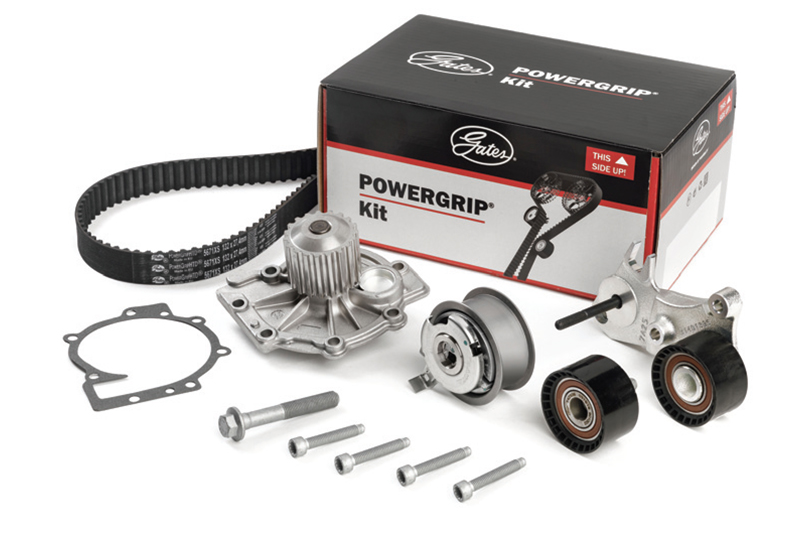
The timing belt drive systems on 1.6 L and 2.0 L petrol driven engines in the VW, Audi, Seat and Skoda model ranges feature a common design. Following a scheduled belt replacement, mechanics often encounter the same problem.
The drive system becomes noisy after a short run with what appears to be a relatively simple and straightforward installation procedure. It is most noticeable before the engine warms up to operating temperature.
Problem and diagnosis
The noise can be traced to a “clicking” sound caused by contact between the belt and the pulley flange. Black marks on the pulley, due to the transfer of rubber material from the belt, may be clearly seen after a very short time. Any contact between the belt and the flange is serious. The belt could jump, which can cause premature drive system failure and lead to disastrous consequences for the engine.
Some mechanics have reported the clicking sound stems from impact between the belt and the lever stop that is on the base plate.
Simple solution
By observing two simple rules, mechanics can avoid improper installation issues with the timing belts on these engines and models.
Rule 1
Ensure the locating lug of the tensioner is positioned correctly in the appropriate slot on the engine.
Rule 2
Follow this installation procedure to the letter: Using the adjuster, turn the tensioner counterclockwise until it stops (maximum tension); then turn it back to its original position (minimum tension). Not only is this action essential, it must be repeated five times to ensure correct belt tension.
Although clearly explained in the instruction manual, many mechanics omit following Rule 2 all the way through because they don’t see the point. However, every rule detail makes certain the mechanism is in the proper position to maintain correct belt tension. Accurate tension is essential.
Action by Gates
Relevant Gates PowerGrip kits for the identified engines include:
- K015489XS (belt plus tensioner)
- KP15489XS-1 (belt plus tensioner and matching water pump)
- KP15489XS-2 (belt plus tensioner and matching water pump)
Gates instructions for PowerGrip kits are engine specific and available in digital form. Mechanics need to simply scan the QR code or the barcode, or input the product code from the label on the box. Return visits to the garage are avoided and garage reputations are protected when procedures.
Inspect and Protect
Timing belt covers provide protection for the drive system, but regular inspection is important to prevent contamination. Take note of these five points to keep things working and running properly:
- Engine fluids, such as coolant, oil, and screen wash, could cause serious engine problems if allowed to enter the timing belt drive system
- Road debris entering the engine compartment is another potential hazard. If dirt is allowed to collect on the sprockets, excess wear will develop, and the possibility of misalignment becomes a real concern
- Misalignment can also occur If gravel or other small particles are compacted in the pulley grooves. The belt might be forced to “ride out” — away from the pulley. This could severely hamper timing belt drive performance, causing high belt tracking forces, edge wear, uneven tooth and land wear, and excessive noise
- A timing belt cover that does not fit correctly might create contact with the belt itself, leading to premature drive system failure
- Most timing belt covers are made of plastic, which can crack during removal or installation. Applying the correct torque when securing the cover is vital. In the event of serious damage, replacement is required.









